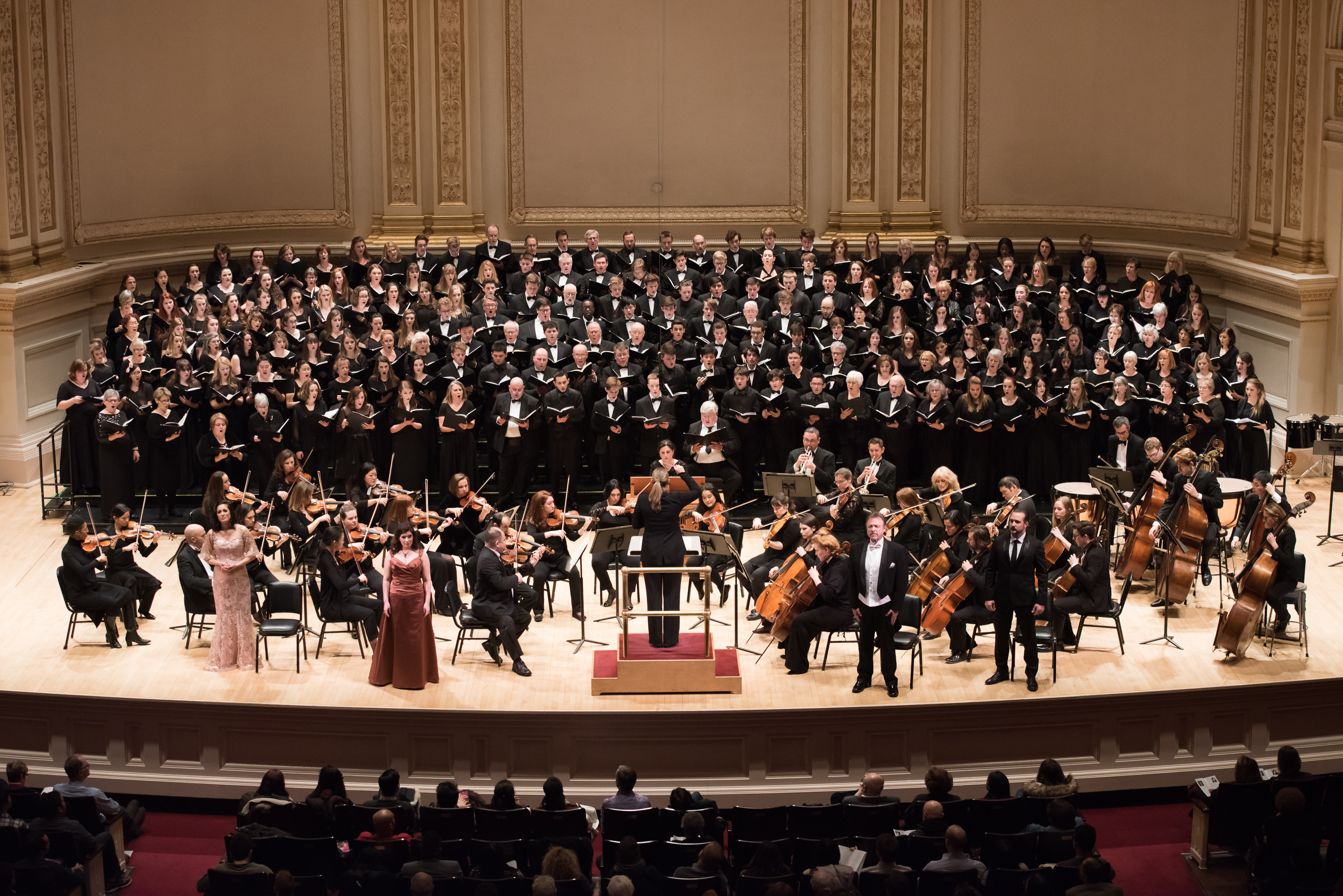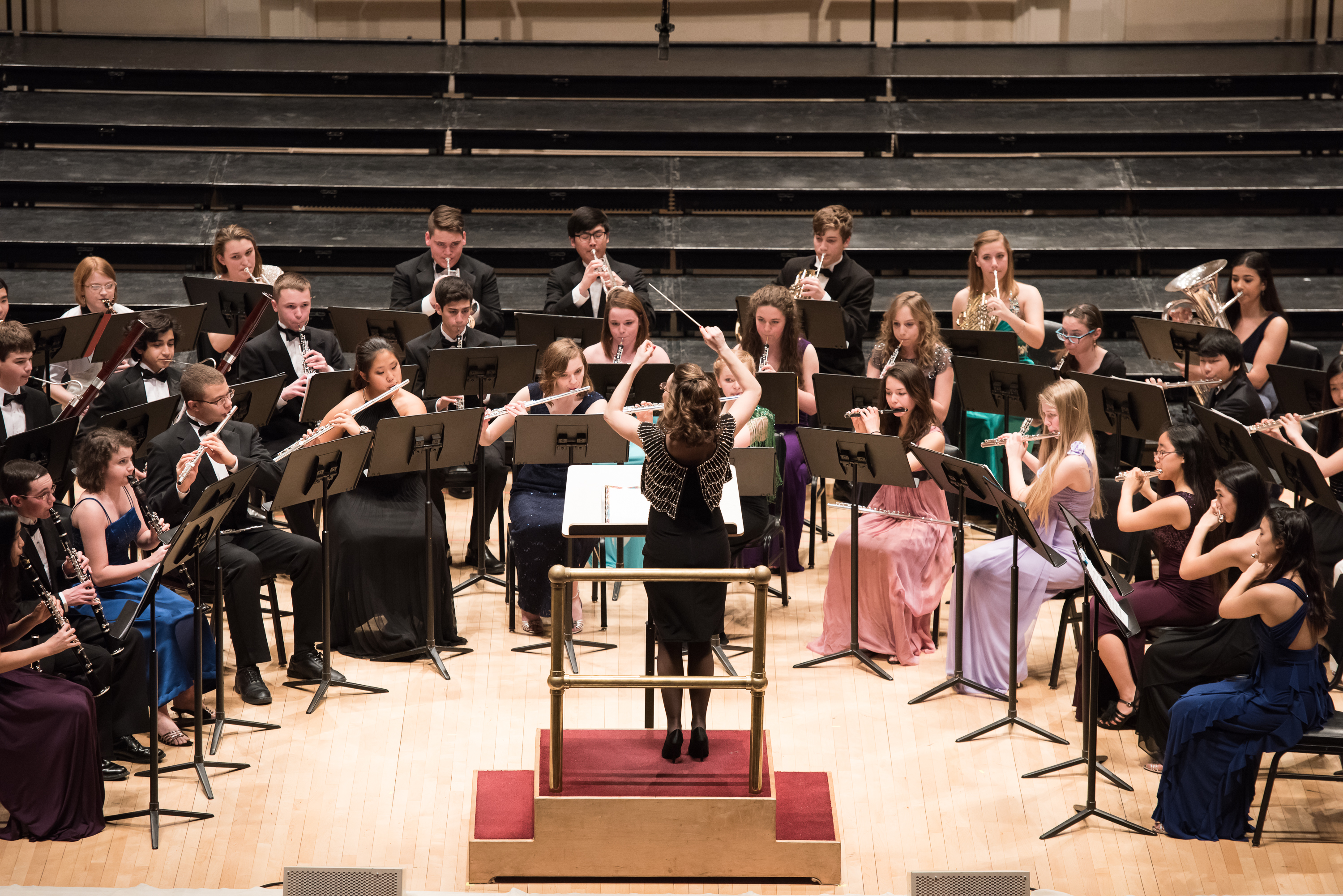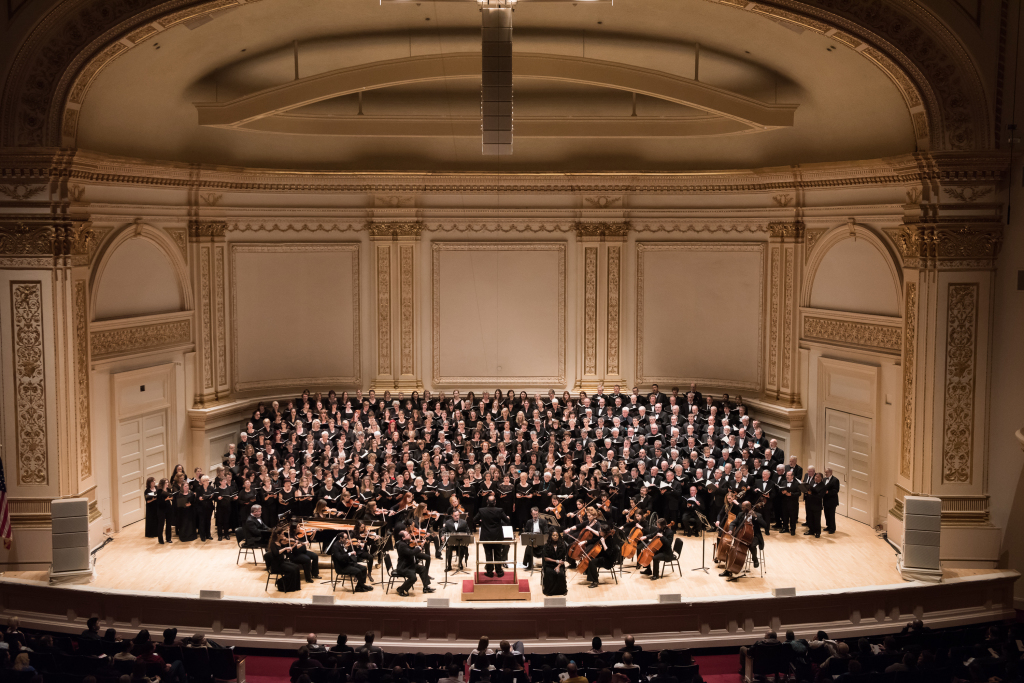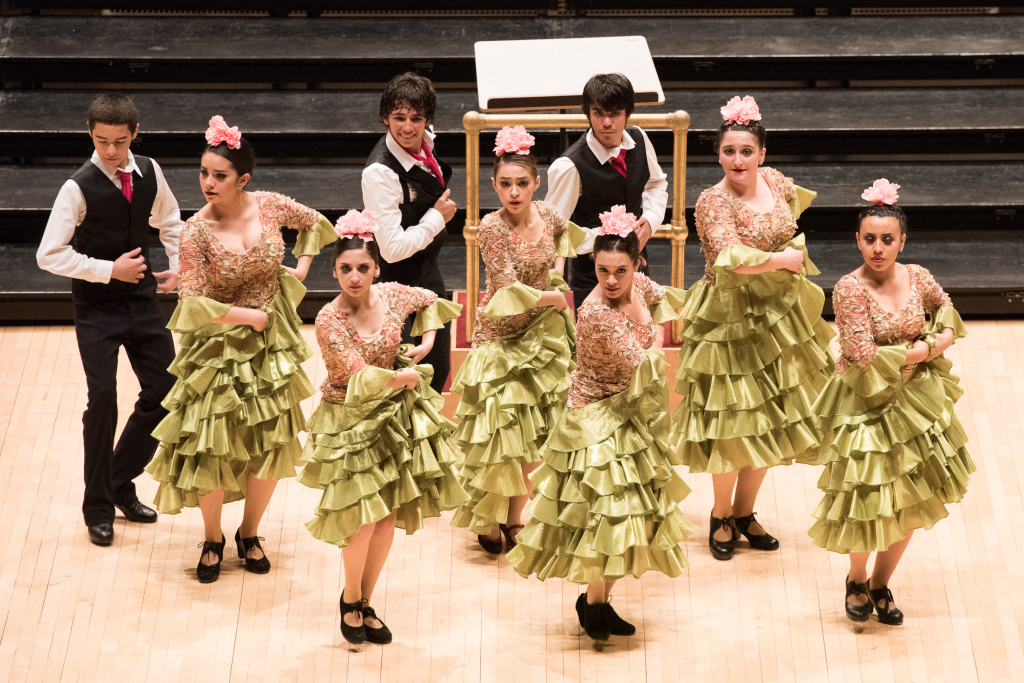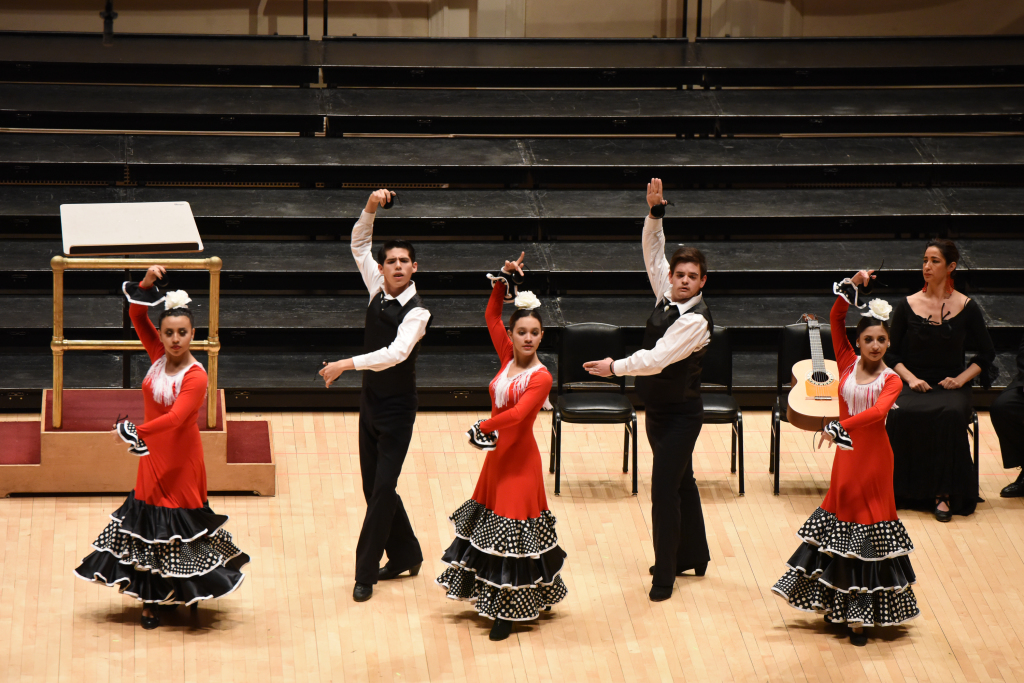Distinguished Concerts International New York (DCINY) presents Reflections of Peace
Flutopia Wind Ensemble, Jennifer Lapple, director
Catherine Sailer, guest conductor
Angela Mannino, soprano; Kirsten Allegri, mezzo-soprano; Jeremy Little, tenor; Steven Taylor, bass
James M. Meaders, DCINY Associate Artistic Director and conductor
Kim André Arnesen, visiting composer
Viola Dacus, mezzo-soprano; Aria Manning, youth soprano soloist
Distinguished Concerts Orchestra; Distinguished Concerts Singers International
Stern Auditorium, Carnegie Hall, New York, NY
January 16, 2017
In a second concert this past weekend to commemorate Martin Luther King Jr. Day, Distinguished Concerts International New York (DCINY) presented a concert entitled Reflections of Peace. It centered on two large works, the Missa In Angustiis of Haydn and the New York City premiere of Kim André Arnesen’s Requiem. The talented youth wind ensemble Flutopia was also featured.
The Flutopia Wind Ensemble took to the stage for the first half. Led by Jennifer Lapple, Flutopia is comprised of high school wind players from the Washington, D.C., and Northern Virginia areas. This was their third appearance in a DCINY event and the second time this reviewer has had the pleasure of hearing them. The name suggests a “flute-centric” ensemble, but this was less the case on this occasion (the number of clarinets being only one fewer than the flutes). I was intrigued by the bottom-to -top tuning approach (tubas first, then rising until reaching the high woodwinds), which was to pay off handsomely.
Opening with the finale of Tchaikovsky’s 4th Symphony, things got off to a slightly rough start, as the brass attacks were tentative, which led to some cracked notes. I cannot emphasize enough to young players to that “playing it safe” is anything but safe. Be bold and confident! Happily, these were isolated occurrences and the growing confidence took over in what was a solid performance. Following with an arrangement of Debussy’s L’isle joyeuse, the young players did the maximum that this arrangement allows. There is a certain sensuousness in the original piano version that is difficult to bring to a wind arrangement on a level appropriate for a young ensemble. Eric Whitacre’s Lux Aurumque followed the Debussy, and proved to be the highlight of Flutopia’s offerings. Intonation and balance were perfect, in a way that I have seldom heard from such a young ensemble. Whitacre’s characteristic textures, with very close intervals, radiated with real beauty. Armenian Dances, based on folk songs from the works of Gomidas Vartabed (also commonly known as Komitas) was the final selection. In a very effective arrangement by Alfred Reed, Flutopia played with brio and polish. Their many supporters gave them a standing ovation, and it was especially delightful to see the beaming smiles on the faces of the young performers. Well done!
After intermission, Catherine Sailer took the podium to lead Haydn’s Missa In Angustiis (Mass in Time of Anxiety), also called the “Lord Nelson Mass”. There does not seem to be any definitive agreement about how the name of Horatio Nelson became attached to this work; a possible explanation, however, was that Nelson visited the house of Esterhazy in 1800 and heard a performance of the work. All this speculation about titles aside, this work, written in 1798, is Haydn at his greatest – the master at work.
Maestra Sailer led with confidence. It was readily apparent that she was prepared with a clear-cut plan of what she wanted and how to get it. Haydn’s large conception was well rendered, but the small details were not overlooked. It might sound trite, but this was a first-rate musician leading a first-rate performance.
The soloists all earned their stars as well. Their parts are not trifles to be dashed off; they are demanding and a challenge for any singer. Kudos to soprano Angela Mannino, mezzo-soprano Kirsten Allegri, tenor Jeremy Little, and bass Steven Taylor for their outstanding singing. Congratulations to the chorus and orchestra are in order as well.
After a brief pause, James M. Meaders took the podium to conduct the New York City premiere of the Requiem by Kim André Arnesen (b. 1980). Mr. Arnesen’s work is in eight movements – six from the traditional mass and the remaining two using texts from Emily Dickinson (Not in Vain), and a slightly modified We Remember Them from the Jewish Book of Prayer.
Mr. Arnesen writes in the program notes of his “fascination with Requiems…I discovered the Requiems by Fauré, Duruflé, Lloyd-Webber, Schnittke, and many others,” and his desire to compose his own Requiem. This admission is telling, for while I cannot point to a definitive example, I had the feeling that the composer was trying to emulate the best of his many famous predecessors. This is not saying that his work is completely derivative, as it is not, as Mr. Arnesen ‘s effective use of the full battery of percussion is a welcome addition to the form. He also has a strong melodic gift, which was especially apparent in the trumpet solos in Not in Vain, Lacrimosa, and Rex Tremendae movements.
The chorus gets high marks for the clarity of diction in the Dies Irae in some high-speed passages. Coupled with the pulsing percussion, it was the highlight of the work for this listener. Just after that, DCINY favorite, mezzo-soprano Viola Dacus, used her vocal gifts to express the poignancy of Dickinson’s text in the Not in Vain movement. She sang with a simple grace that was very moving to this listener. Young soloist Aria Manning has a lovely voice that shows the promise of bright future.
After the quiet ending of the We Remember movement, the audience rewarded the performers with a standing ovation. Mr. Arnesen came to the stage to accept well-deserved congratulations.

